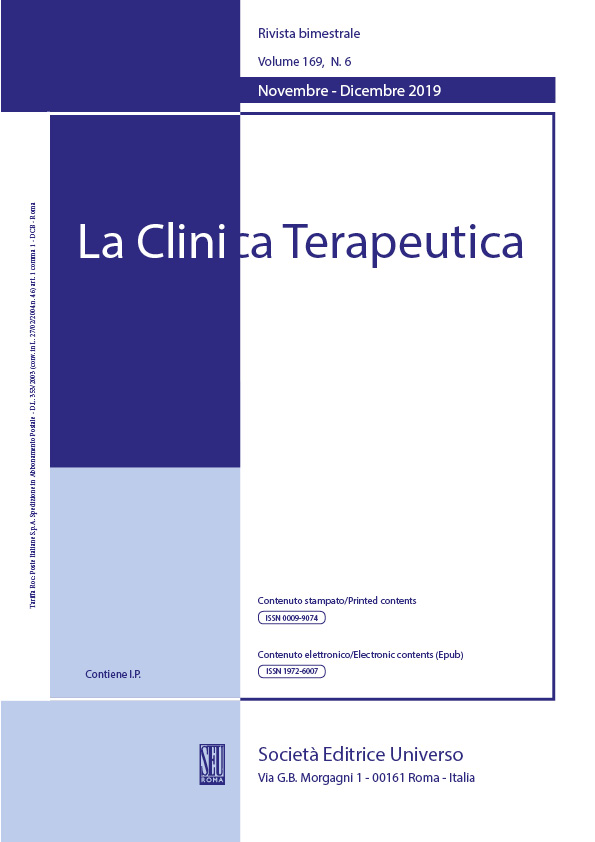Abstract
Objectives
Port-a-cath catheterization is often required for those patients who need long-term therapies (malnutrition, neoplasm, renal failure, other severe diseases). The use of ports for a wide range of indications is not exempt from complications. Ultrasound-guided central venous catheterization (CVC) is a safe and fast technique for the introduction of the catheter inside a central vein. This retrospective study reports our experience with US-guided CVC in patient eligible for port-a-cath implantation.
Materials and methods
From January 2007 to March 2017, 108 CVC (out of 770 procedures), were positioned using an ultrasound guide, with the new “one-shoot technique” (group 1) and the classic Seldinger technique (group 2),
Results
One-shoot techniques showed a reduced operative time, in comparison to Seldinger technique, with a negligible minor complication rate. No major complication were evidenced.
Conclusions
CVC is a safe procedure, although not free from complications. Ultrasonography enhances safety of the procedure by decreasing puncture attempts and complications; it is helpful in patients with vascular anatomical variations, with no visualized or palpable landmarks or for patients with coagulation disorders
